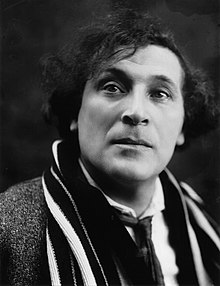Fridtjof Nansen
(This is just a very short summary, please use the links in the references for more information).
Fridtjof Nansen, born 10 October 1861 in Store-Frøen, near Kristiania (today Oslo), was a polymath. While many are familiar with the name as an explorer and the first to cross Greenland (in 1888), he was also a scientist, oceanographer, diplomat, and humanitarian.[1]

A year before crossing Greenland, he published his doctoral thesis titled “The Structure and Combination of the Histological Elements of the Central Nervous System”, which is now considered ground-breaking research.[2][3] After his return from the polar exhibition in 1896, the University of Kristiania established a professorship for him in zoology. In 1908, this professorship changed to professor of oceanography.[4]
Fridtjof Nansen was increasingly interested in politics and traveled to the UK to lobby for support from the British for the dissolution of the union between Norway and Sweden. Sweden recognized Norway as an independent constitutional monarchy on 26 October 1905. Nansen served as the first Norwegian ambassador to the UK until 1908. With the outbreak of World War I his interest shifted to international affairs and he was instrumental in negotiating shipments of essential foods despite the Allied Blockade.[5]
On 10 January 1920, the League of Nations was founded after the Paris Peace Conference.[6] The mission of the League of Nations was to maintain world peace. Fridtjof Nansen was the president of the Norwegian Union and a delegate to the League of Nations. In June 1921, the League asked Nansen to head a relief effort for famine-stricken Russia and appointed him High Commissioner for Refugees. Nansen was instrumental in repatriating Prisoners of War held captive in Germany and Russia home, the last ones in 1922.
Fridtjof Nansen received the Nobel Peace Prize in 1922 for his humanitarian efforts
The Nobel Peace Prize 1922 was awarded to Fridtjof Nansen “for his leading role in the repatriation of prisoners of war, in international relief work and as the League of Nations’ High Commissioner for refugees.”[7]
He passed away on 13 May 1930 in Oslo.[8]
Nansen Passport
Civil War in Russia and the Armenian Genocide in the Ottoman empire had stripped millions of families of their citizenship and seeking asylum in other countries was difficult. At an intergovernmental conference in Geneva in 1922 Nansen instituted the “Nansen Passport”, the first identification document for stateless people/refugees allowing them to cross borders and find work. The Nansen Passport was recognized by 52 countries. Russian anticommunists and Armenian refugees were the first to be issued Nansen passports. Others followed, including Jews stripped of their citizenship by Nazi Germany.
About 450,000 people were issued a Nansen Passport. [9]

One of the better-known people receiving a Nansen Passport was Marc Chagall, born Moise Chagall to Jewish parents in Belarus. He used the Nansen passport[10] to get to France, where he eventually received French citizenship in 1937, just to be stripped of it in 1941, when the Nazis took power in France. Chagall was able to flee France and his citizenship was restored after WWII.
The Nansen International Office for Refugees was awarded the Nobel Peace Prize 1938 “for having carried on the work of Fridtjof Nansen to the benefit of refugees across Europe.”[11]
Genealogically Relevant Sources
There is no database including all recipients of a Nansen Passport.[12] The United Nations Archive in Geneva does have some relevant documents, including lists of names and correspondence between refugees and the Nansen Office. These can be researched at the archive. The catalog and contact information of the archive is available online here.
A list of about 1500 Armenian recipients of the Nansen passport who requested the passport in Marseille is available here.
References
[1] FRAM – The Polar Exploration Museum, Nansen, Fridtjof (1861-1930) (https://frammuseum.no/polar-history/explorers/fridtjof-nansen-1861-1930/ : accessed 16 November 2021).
[2] University of Oslo, Fridtjof Nansen: A Pioneer of Knowledge (https://www.uio.no/english/about/facts/how-uio-changed-norway/nansen.html : accessed 16 November 2021).
[3] Ortwin Bock, Karen B. Helle, Fridtjof Nansen and the Neuron (Bergen, Norway: Bodoni Ferlag, 2016), PDF download, Federation of European Neuroscience Societies (https://www.fens.org/wp-content/uploads/2020/11/Fridtjof_Nansen-LmswflrNSeKeZ9WUh87Ckw.pdf : downloaded 16 November 2021).
[4] Britannica, Fridtjof Nansen: Norwegian Explorer and Scientist (https://www.britannica.com/biography/Fridtjof-Nansen : accessed 16 November 2021).
[5] NobelPrize.org, Fridtjof Nansen – Biographical (https://www.nobelprize.org/prizes/peace/1922/nansen/biographical/ : accessed : 16 November2021).
[6] Britannica, League of Nations (https://www.britannica.com/topic/League-of-Nations : accessed 16 November 2021).
[7] NobelPrize.org, The Nobel Peace Prize 1922 (https://www.nobelprize.org/prizes/peace/1922/summary/ : accessed 16 November 2021).
[8] NobelPrize.org, Fridtjof Nansen Facts (https://www.nobelprize.org/prizes/peace/1922/nansen/facts/ : accessed 16 November 2021).
[9] Australia for UNHCR, 20 October 2014, History of the Nansen Passport – UNHCR’s first refugee passport (https://www.youtube.com/watch?v=X99glRX1ur8 : accessed 16 November 2021).
[10] UNHCR Global Report 2014, Nansen The man, the Inspiration, The Legacy, PDF download, UNHCR.org (https://www.unhcr.org/5575a7860.pdf : downloaded 16 November 2021), page 3 shows picture of the Nansen Passport of Marc Chagall.
[11] NobelPrize.org, The Nobel Peace Prize 1938 (https://www.nobelprize.org/prizes/peace/1938/summary/ : accessed 16 November 2021).
[12] UN Geneva, FAQs, Library & Archives, Can I trace the Russian Refugees Who Received the Nansen Passport (https://www.ungeneva.org/en/node/59286 : accessed 16 November 2021).

Is he a realtive of yours, or just someone you decided to write about? It may sound strange of me to say, but I like your use of vocabulary. Great photos! Very intersting story! 🙂
No, he is not a relative. I am not only blogging about my own family, but also about subjects related to German and German Jewish ancestry in general.
Ooh, I can’t wait to read more about German topics! 🙂